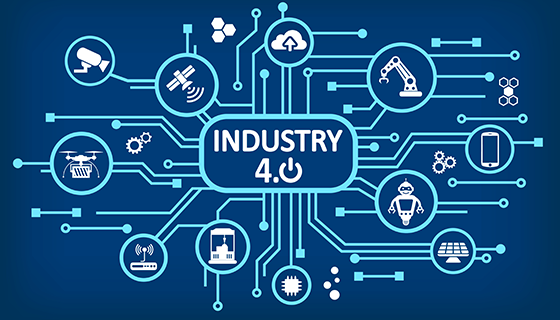

Most homes have a thermostat enabling homeowners to control their heating system. Traditionally the thermostat is a programmable device that connects to the heating system via wire or radio. Smart thermostats connect the heating system to the internet enabling the homeowner to enjoy enhanced features and control their heating remotely using an app on a smartphone or a similar device.
A collection of connected devices, such as a brand of smart thermostats, will form a network and the local system will likely require a software algorithm to manage any automation.
A web or mobile app will then provide homeowners with secure remote access to control their heating and set the level of automation required. This type of smart technology, collectively referred to as IoT, is gradually finding its way into our homes, cities and businesses offering new levels of automation and efficiency.

A well-designed IoT solution should be easy to install and require minimal intervention once in operation. For a smart thermostat to work well, all the electronics in the thermostat and heating, to the radio connecting the devices, the cloud server and smartphone app will need to be carefully designed to work together securely and efficiently.
We are uniquely well-placed to partner with you in developing your IoT products, our dedicated and skilled team can handle everything including designing and delivering the electronics through to writing the software and mobile apps, we genuinely offer a seamless solution.
Industry 4.0 or the Fourth Industrial Revolution is identified as the move towards greater automation of traditional industrial, commercial and manufacturing practices and processes.
The automation required to reach Industry 4.0 or the ‘smart factory’, requires greater connectivity by integrating IIoT (Industrial Internet of Things).

We have technology to cover every facet required for a successful IIoT implementation:
Even a modest IIoT system can provide high resolution status and control that can be used to dynamically control processes and systems. Systems with large numbers of sensors, or users can generate large volumes of data. Historical information from such systems is valuable in making predictions, calibration, optimisation and for future planning.
Existing computer systems and software applications are typically suited to manual entry so might be overwhelmed with large quantities of data.
Pre-processing data at IoT nodes or at the logical edges of IoT networks helps distribute the processing burden.


Our IoT nodes contain powerful processing capabilities so that data processing can be localised or distributed across several nodes rather than all centralised on a server.
Our IoT nodes are also powerful enough to implement edge computing, allowing further aggregating or prefiltering of data before sending onto existing computer applications.
If required, IoT nodes can be simply augmented with additional processing capabilities.
The term Edge Device was coined for a device at the extremities of an IoT network and are typically sensor or actuator nodes in a simple IoT network. The edge devices connect the IoT network to a server often via a router, cellular link or other method of communication. Increasingly these edge devices incorporate processing power – edge computing.
The edge computer could be a designated IoT node, a node augmented with extra processing power (our IoT nodes are modules), a standalone computer or dedicated hardware.
When designing a larger system, edge computing, localised or distributed processing can be used to remove dependencies and provide secure autonomous islands. This not only improves security but can be used to provide system redundancy.

IoT systems will likely generate more data and we have explained how this can be managed by aggregating, filtering and using localised, distributed and edge computing.
It might be necessary for your existing software applications to communicate directly with the IIoT system.
We can provide software applications that will not only provide an interface or bridge, but that can augment any processing or automation missing from the existing software.
These software applications, together with enterprise resource management (ERP) systems, are built using our developing Strata Toolset and Framework. With Strata we can rapidly build a high performing, secure application that can then connect into your existing or legacy applications.
To further automate an IoT system, machine learning can be added so that the system learns from its interactions with humans or other devices, or uses previous learning.